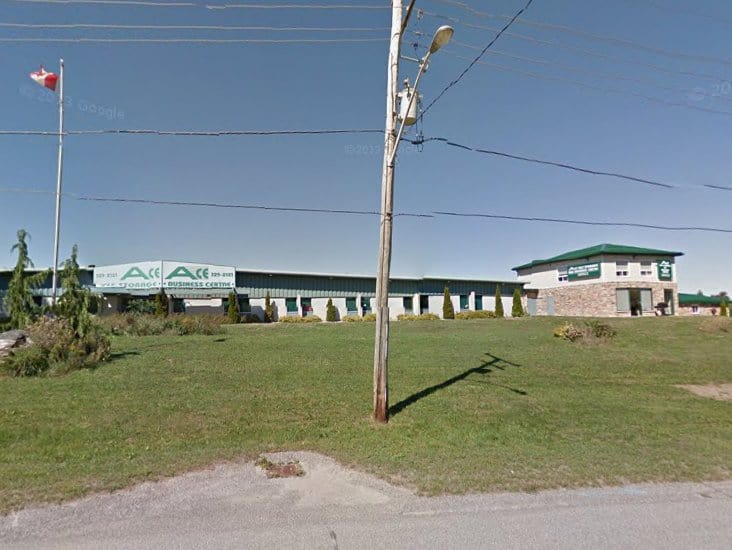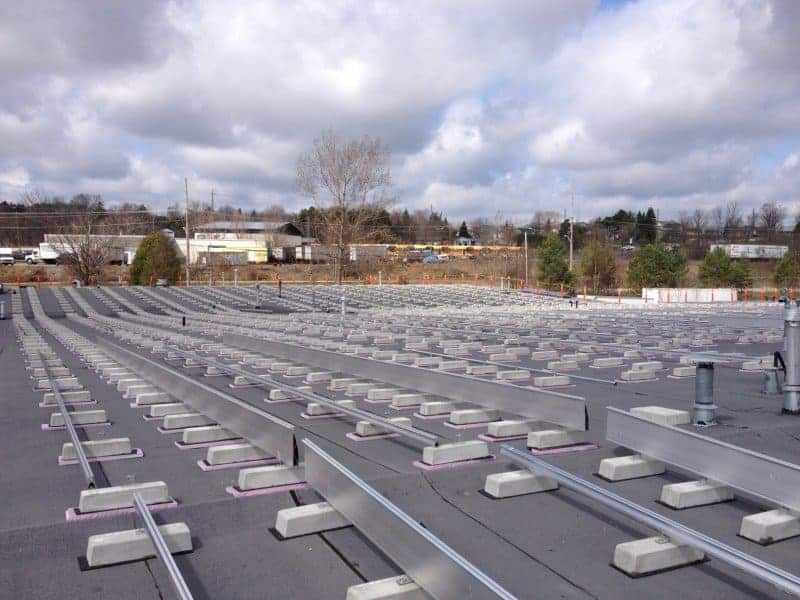Ace Storage Solar Project, Orillia, Ontario
The Hayter Group recently completed one of the larger solar projects that we have been involved with.
To give an idea of the scale, The Ontario Government approved 934 commercial solar projects in 2013 under the FIT (Feed-in-Tariff) program. Approval was granted to bring 146.5 mW of solar electricity production on stream. That’s enough to power 21,000 homes.
Most of The Hayter Group’s solar work comes from microFIT projects. These are solar installations on residential roofs that are under 10 kW. FIT projects are over 10 kW in size and are for commercial buildings. With 934 projects approved, the average FIT project was about 157 kW.
Ace Self-Storage in Orillia, Ontario obtained approval for a larger than average project of 393 kW. That’s enough electricity to power about 60 homes. The Hayter Group was tasked with installing over 1,500 solar panels on the warehouse roof.
The Hayter Group has developed considerable skill and experience with rooftop solar installations. Unlike ground mounted systems that you’ve probably noticed in the country. Roof-mount systems present unique engineering challenges. Prior to installation, the roof truss system needs to be evaluated. We need to make sure the roof can safely carry the load of the solar panels and mounting rails. The installation also involves installing mounting brackets on the roof. All mounting points need to be properly sealed to ensure that there will be no rain-water leaks after the installation is complete. As a reputable contractor, we need to make sure this work is done correctly, because we stand behind our installations.
The lower left photo shows what the project looked like after the rails were installed on the roof mounts. Note that the height of the rails alternates from low to high. This allows the south facing panels to gain the maximum amount of sunlight available. It also allows the panels to clear themselves of snow in the winter months.
Solar Panels are installed on the rails. It takes 40 panels for each 10 kW of the total project. Solar Panels are virtually maintenance-free and will produce power for up to 40 years. Panel performance degrades gradually over time, but even after 20 years, panels are producing at over 90% of their design.
Photos below show the extensive wiring required to hook up the entire system. Custom built cable trays were also required for clean and organized routing of wire.
On the ground, a large concrete pad was poured to accommodate the main combiner, inverter, and utility meter. Solar Inverters are the brains of the system. They convert power produced by the panels from DC (direct current) to AC (alternating current) to feed back into the grid.
Like residential projects, commercial projects are set up by the Ontario Government with a 20 year contract to purchase power produced from the installed system. The contracts assure investors a good rate of return on their solar installation.
Many commercial buildings have a large rooftop area that is not obstructed by trees or other buildings. With a solar project, the business can put another part of their building to work. They can also offset their carbon use by the clean energy they produce.
The government is often criticized for paying a premium for renewable energy. These projects have several advantages for the province. Small solar installations do not require investment in the grid. The power is all used locally. The projects also encourage development of green energy, which benefits our environment in the long run. As a result of these investments to date, costs of renewable energy production has dropped dramatically over the past 5 years.
Whether you are a homeowner looking for a sound investment, or a small business, you can contact The Hayter Group for a free assessment of your property’s solar potential. The Hayter Group will deal with the paperwork and can bring your solar project on stream successfully.










